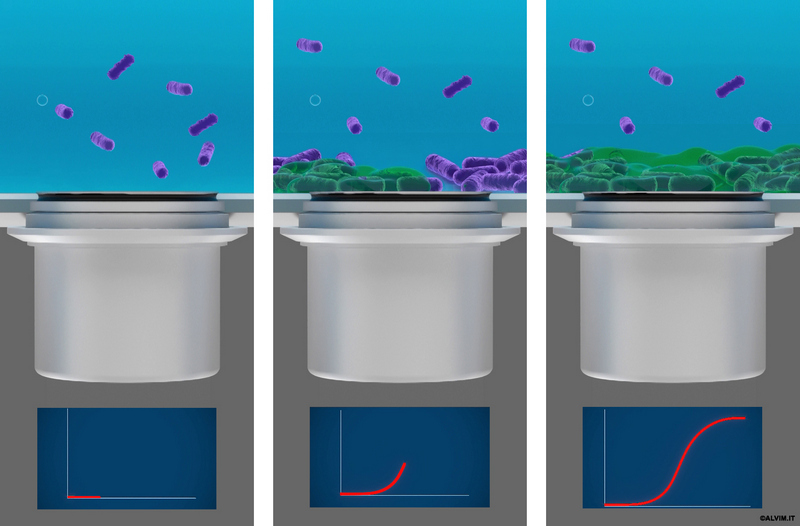
Cooling towers act as air scrubbers and accumulate nutrients from the environment, especially when operating in industrial applications with a high-nutrient environment (food manufacturing, paper mills, etc.). This boosts the proliferation of microorganisms. In particular, bacterial growth on surfaces (usually known as biofilm or bacterial slime) causes serious problems, both contributing to the deterioration of materials and, most important, increasing the risk of harmful microbiological contaminations (e.g. Legionella pneumophila). The "European Technical Guidelines for the Prevention, Control and Investigation, of Infections Caused by Legionella species ", underlines that surface-adhering (sessile/biofilms) bacteria need to be controlled, for a complete and effective treatment programme. Most bacteria live in biofilms, not free in the water, and this slime is the ideal environment for the survival and proliferation of Legionella and other pathogens. For these reasons, large amounts of chemical substances (biocides) are used to limit microbiological growth in cooling towers.

To prevent Legionella outbreaks and other issues caused by bacteria, it is important to apply biocide treatments (sanitation treatments) as soon as biofilm starts to form. Indeed, biofilm is much more resistant to to chemicals than free-floating bacteria, and this resistance increases with time. Without a device able to detect biofilm on line and in real time, it is extremely difficult to prevent the risk linked to the proliferation of pathogens, and all the other issues caused by bacterial growth in cooling towers.
The ALVIM biofilm detection system allows to verify, in real time, when a cleaning treatment or sanitation treatment is needed and, at the same time, the efficacy of such treatments.
The ALVIM biofilm monitor is currently used worlwide to prevent Legionella and other microbiological issues in cooling towers.
An application case, about checking biocide effectiveness in cooling towers is available here.
Another application case illustrates what happens in cooling towers when chlorination does not work as expected .
For more info, visit the ALVIM Biofilm Sensors page, or Contact us!





